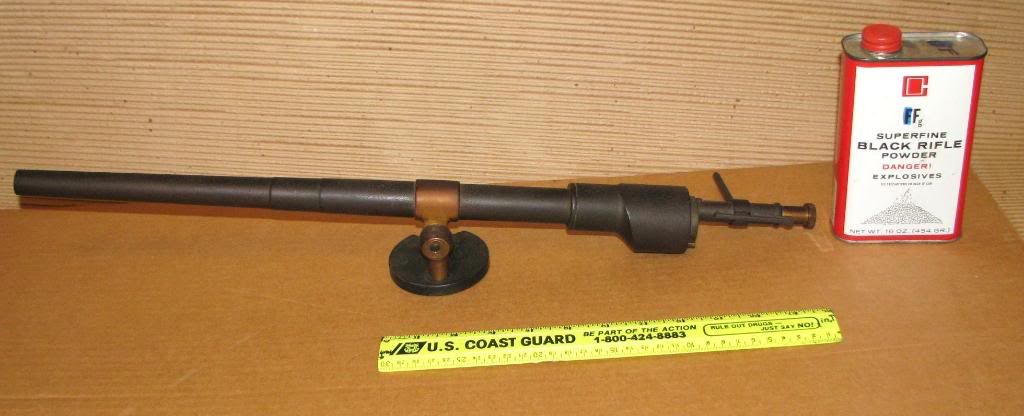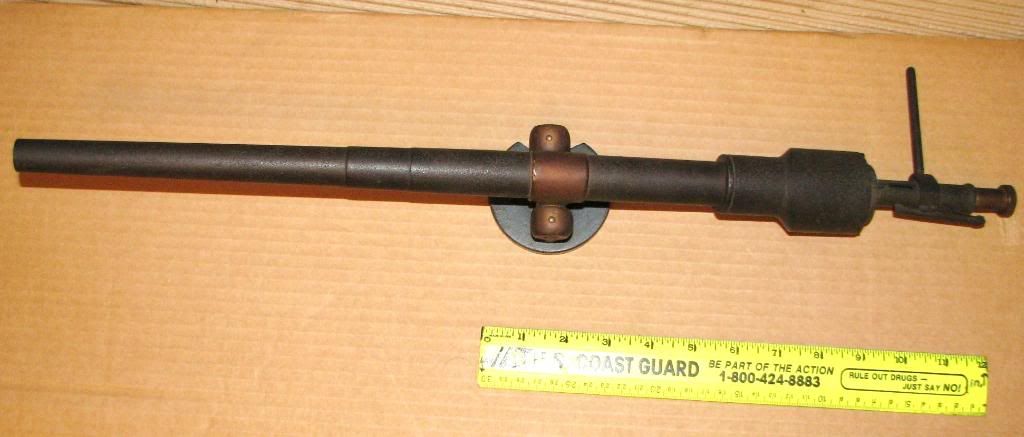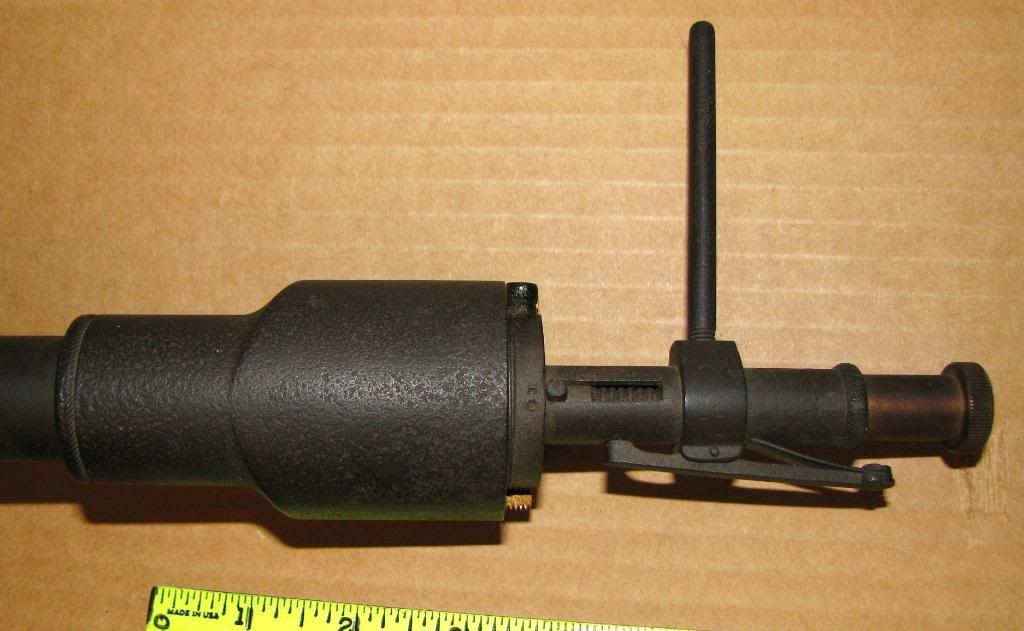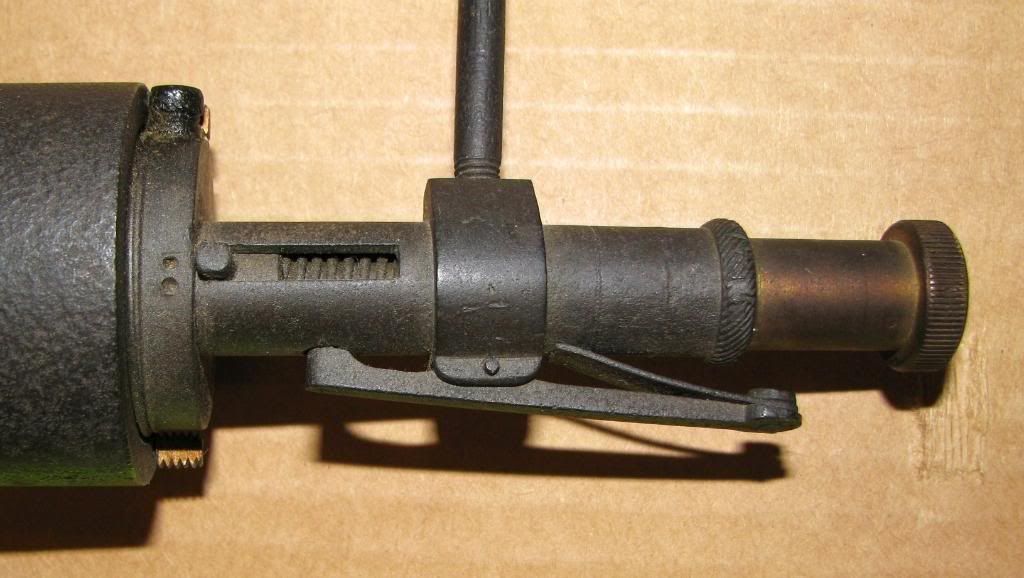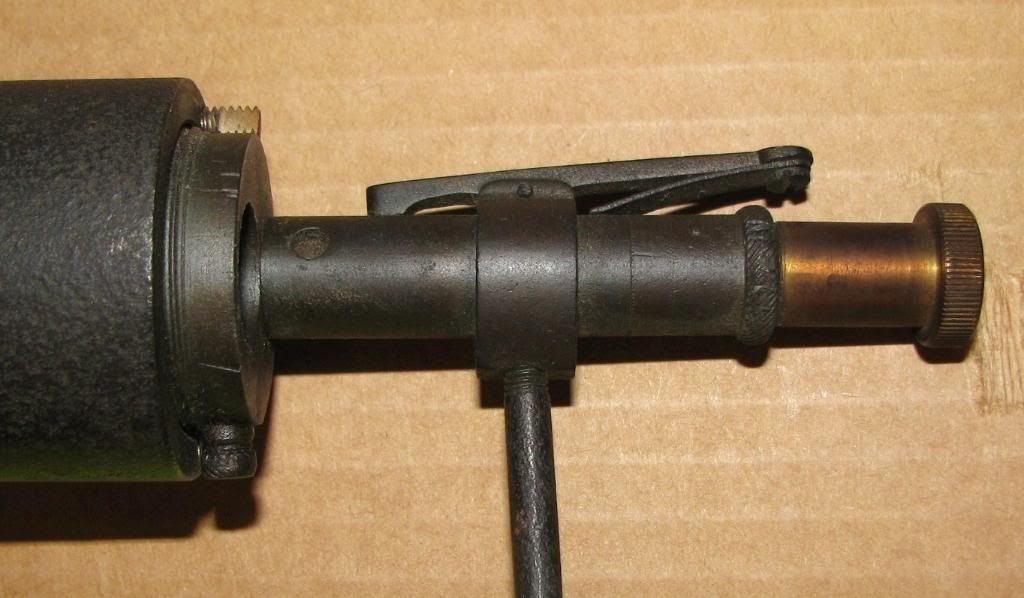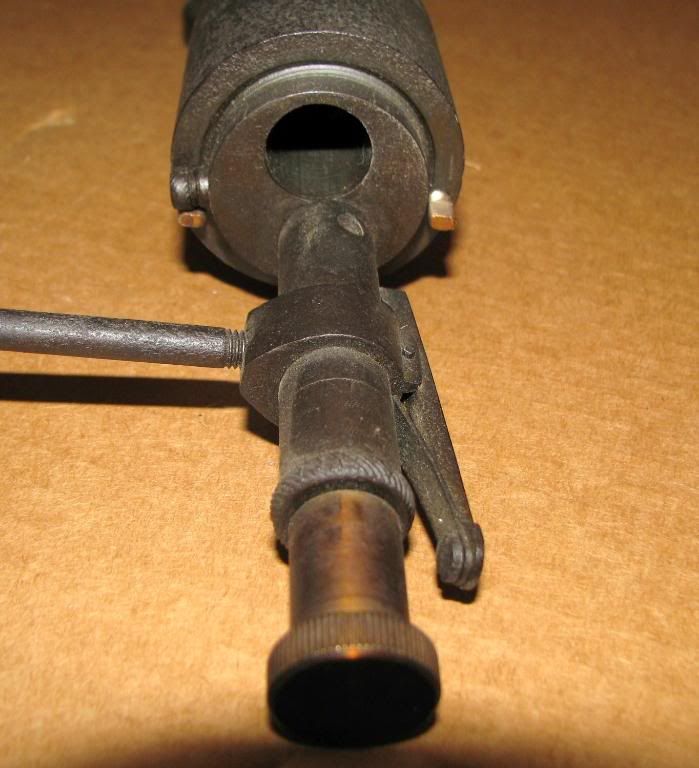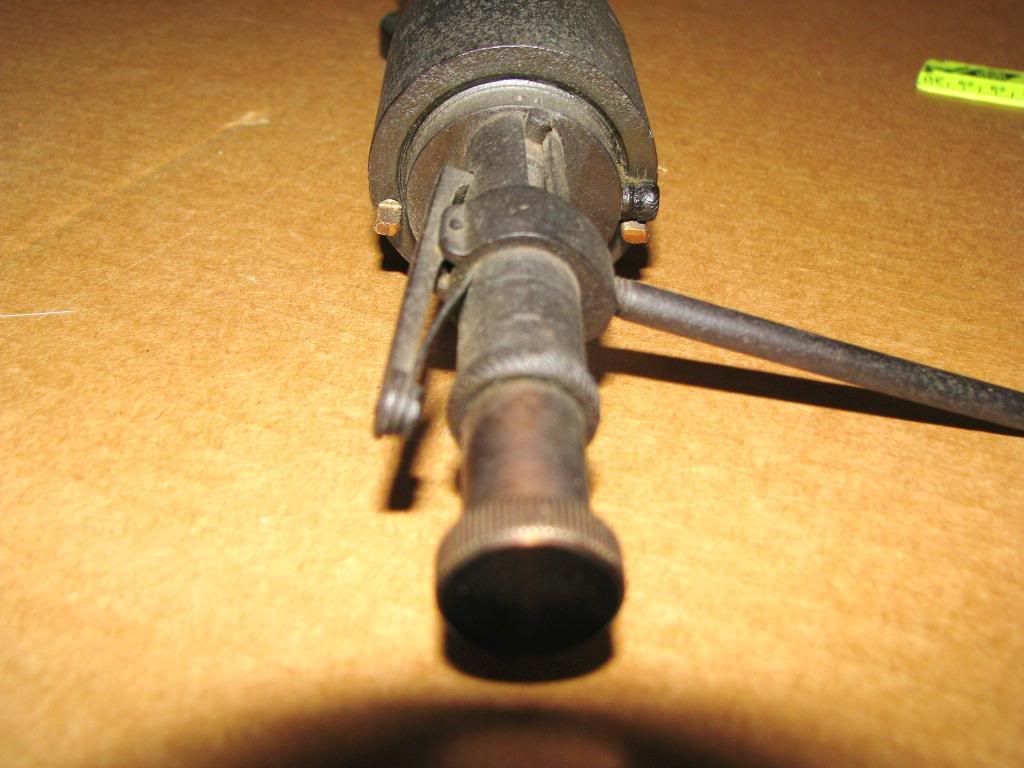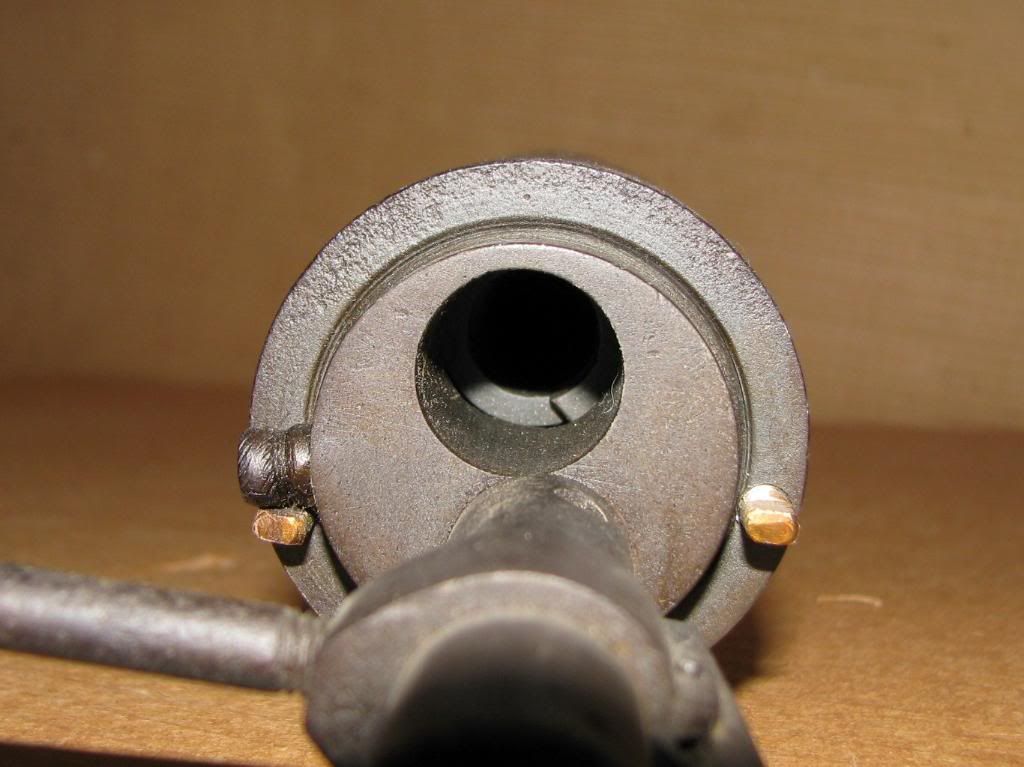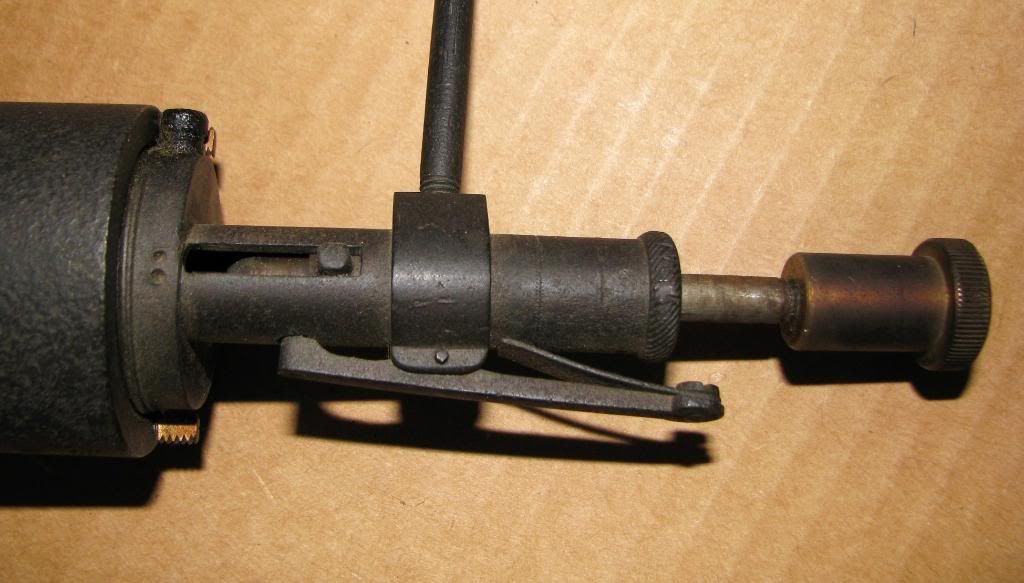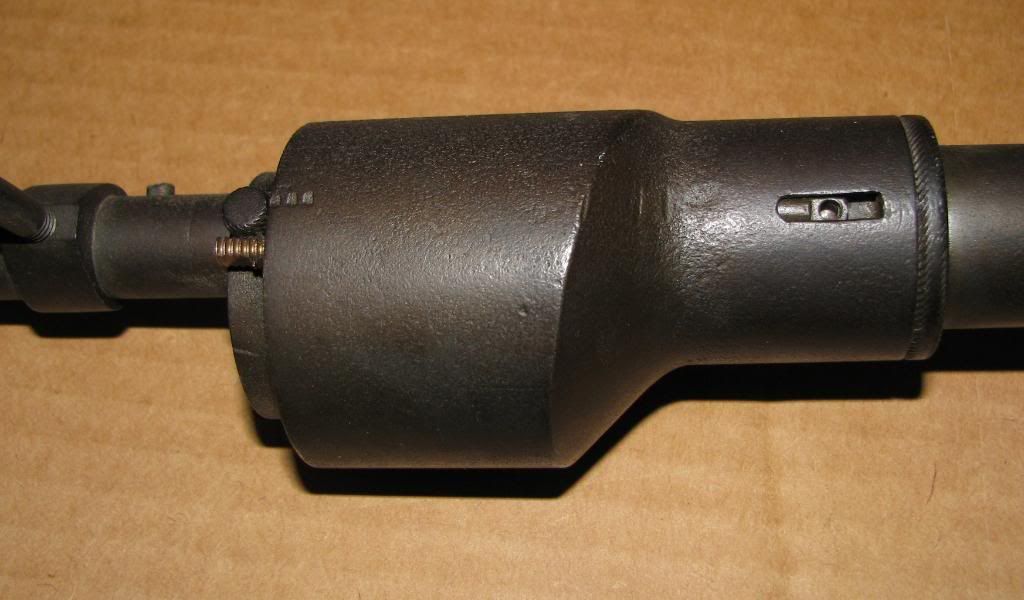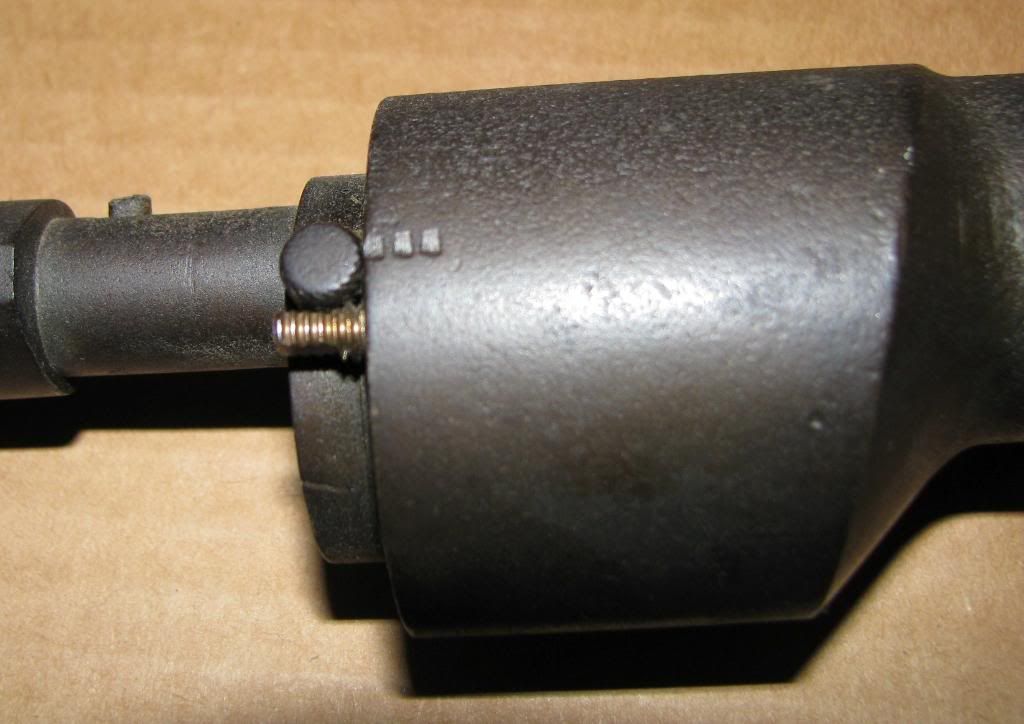This one seems to be chambered for .45-70. The breech rotates 180 degrees CW to close, camming the extractor forward. The firing pin knob has to be cocked manually. After firing the breechblock is rotated back 180 deg. CCW, and the manually-operated extractor lever which was once on right side of breech housing, is moved rearward to extract case. It still moves fine but the handle is missing. The barrel is rifled and may have been a surplus .45-70 rifle, that would have been a practical way to start this project. Notice the little sets of matchmarks. This appears to have been made by a very good machinist back in say late 19th C.,, but I have no way to tell the age for sure.
The interesting thing is that this works almost identically to the French 75MM gun M1897, so I'm wondering whether this model preceeded that development, or came afterward. If you wanted to make one of these, check with BATFE for minimum barrel length required to qualify as a "rifle" and not fall into a category that is more tightly regulated. I was led to believe that this model predates 1899, but again, no proof.
I have not fired this and won't until I get a better mounting, which may be never, but it is all ready to shoot if properly mounted. I'd always start shooting something like this with a greatly reduced load, say original load was 70 grains black powder and 500 grain bullet, I'd still use the same bullet but with maybe 15 grains of powder, then work up to somewhat more only until it had a nice target trajectory for 100 yards where I could hit a 55 gal. drum or something. I don't want to risk damaging an interesting antique like this, and may in fact never shoot the thing.
I think if I counted right, the 10th and 11th photos show the striker held in cocked position by the spring-loaded sear/trigger lever.
